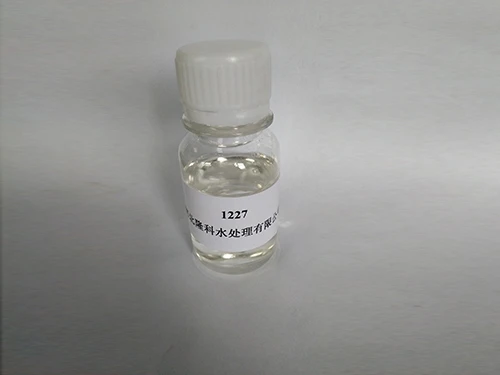Optimizing Industrial Flocculant Solutions for Enhanced Water Treatment Efficiency
The Role of Industrial Flocculants in Water Treatment
Industrial flocculants have become essential components in various processes across many industries, especially in water treatment and wastewater management. These chemical agents facilitate the agglomeration of particles, allowing suspended solids to clump together into larger clusters or flocs. This article will delve into the types, mechanisms, applications, and benefits of industrial flocculants in promoting efficient water treatment solutions.
Understanding Flocculants
Flocculants can be defined as substances that promote the agglomeration of particles. They are typically organic polymers such as polyacrylamides, polyelectrolytes, and natural products like starch. These agents work by neutralizing the charges on particles, allowing them to stick together and form larger aggregates. This process is known as flocculation.
Flocculants can be divided into two main categories anionic and cationic. Anionic flocculants are negatively charged and are primarily used in applications where positively charged particles are present, whereas cationic flocculants are positively charged and are more effective in treating negatively charged particles. Non-ionic flocculants, which carry no charge, are also available and serve a versatile role in flocculation processes.
Mechanism of Action
The effectiveness of flocculants lies in their ability to alter the surface characteristics of the particles in suspension. When added to water, flocculants disrupt the stability of colloidal particles. They achieve this by neutralizing the electrostatic forces that keep particles apart. This neutralization leads to the formation of flocs that can settle at the bottom or be removed through filtration.
The flocculation process involves several steps 1. Dispersion Flocculants are dispersed into water, where they interact with the suspended particles. 2. Coagulation The initial contact leads to the agglomeration of particles as charges are neutralized. 3. Floc Formation As more particles come together, large flocs are formed that can effectively settle or be removed from the liquid.
Applications of Industrial Flocculants
Industries utilize flocculants in various ways
1. Municipal Wastewater Treatment Flocculants reduce turbidity and promote solid-liquid separation. They are crucial in clarifying municipal wastewater and ensuring compliance with environmental discharge standards. 2. Mining Industry Flocculants enhance mineral recovery in processes like sedimentation and are used to manage slurry. They help in separating valuable minerals from waste material efficiently.
industrial flocculant

3. Paper and Pulp Industry In paper production, flocculants assist in the retention of fibers and fillers during manufacturing, improving overall product quality and reducing waste.
5. Oil and Gas Industry Flocculants are used in oil spill response and water treatment for hydraulic fracturing operations to separate oil and water.
Benefits of Using Flocculants
The use of industrial flocculants offers numerous advantages
- Enhanced Efficiency Flocculants significantly improve the speed of sedimentation and filtration processes, resulting in faster operations and reduced costs. - Improved Water Quality The ability to remove suspended solids leads to clearer and cleaner water, which is essential in environmental compliance.
- Reduced Chemical Usage By improving the effectiveness of sedimentation and filtration, flocculants can reduce the need for additional chemicals, making processes more environmentally friendly.
- Versatility With a variety of available flocculants, industries can tailor their choice based on specific requirements, optimizing performance for various applications.
Conclusion
In conclusion, industrial flocculants are integral to water treatment, offering practical solutions across multiple industries. Their ability to enhance the aggregation of particles minimizes environmental impacts and fosters the efficient recycling and reuse of water. As industries increasingly focus on sustainability, the role of flocculants will continue to grow, paving the way for more advanced and eco-friendly water management practices.
-
Water Treatment with Flocculant Water TreatmentNewsJun.12,2025
-
Polymaleic AnhydrideNewsJun.12,2025
-
Polyaspartic AcidNewsJun.12,2025
-
Enhance Industrial Processes with IsothiazolinonesNewsJun.12,2025
-
Enhance Industrial Processes with PBTCA SolutionsNewsJun.12,2025
-
Dodecyldimethylbenzylammonium Chloride SolutionsNewsJun.12,2025





